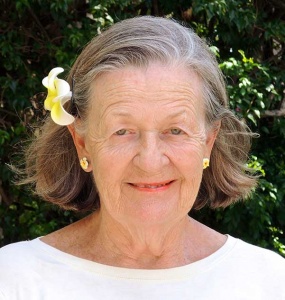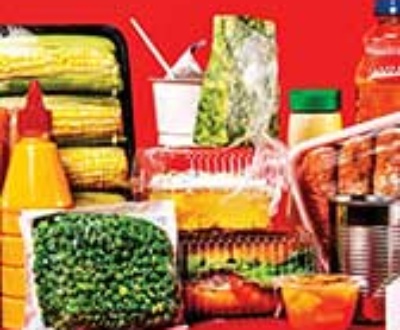What’s happening in California? The news is full of floods, rivers of mud, sinkholes, evacuations-all up and down the state as I write this January 11th. The state is just getting pummeled with rain, one system after another. There is an irony to this since the state and a lot of the west has been in a multi-year drought. Hopefully, the fact that some of this rain is turning into the snow pack in the Sierra mountains that feeds the Colorado River will help stabilize that system.
Of course the commentators are saying the warmer atmosphere can hold more rain and therefore dump more rain. I think we can agree that the weather is getting more violent. In fact the National Oceanic and Atmospheric Administration (NOAA) tracks storms that cause more than a billion dollars worth of damages. In the 80’s it averaged three a year: in the go’s 5; in the 2000s it was six a year: in the 201o·s it jumped to 12 a year and in 2020 it was 22 disasters costing more than a billion dollars. Not good. Our infrastructure has been built to the specifications of the climate we no longer have so that will also have to be upgraded.
You Can Choose Plants that Contribute to the Food Web
Dr. Doug Tallamy, America’s most respected voice for native plants, thinks we should be focusing on whether a plant is a contributor or a non-contributor to our local ecosystem. Nature is so absolutely cool but it is also absolutely FULL of intricate connections that we humans blunder around absolutely ignoring which was fine when humans took up 1/3 of the planet and 2/3 was wilderness-but now that we take up 2/3 we have to pay attention to this. You see there is not enough wilderness now to sustain the biodiversity of the planet and humans NEED TO HELP!
You can help by choosing plants for your yard that feed the food web. When you plant native plants, our insects that evolved with those plants can eat those plants and lay their eggs on it. Non-native plants are protected by chemicals in the plants which our native insects can not eat! Plants form the basis of the food web. Without plants that our insects can use, the insect population drops. Fewer insects mean fewer birds and on up the food chain. There are three million fewer breeding birds in North America today than there were 50 years ago-and we’ve already lost 45% of our insects! (Mother Earth News, Oct 22)
Ecosystem collapse is happening, Dr Tallamy says, because the planet has more human habitat and yards than wilderness and humans are loading their habitat with plants that do not contribute to the food web, non native plants. Homeowners can make a huge difference because residential landscapes in the US take up 484 million acres, 280 times Yellowstone Park! Our decisions will determine the food web in these millions of acres. SO GO NATIVE! Of course the other benefit is less maintenance since these plants live on what nature gives them!
Good Stuff!
The state of Florida is giving Miami-Dade County $22.7 million to support water quality improvements through the Biscayne Bay Grant program. A CELEBRITY CEMETERY WHERE NATURE TAKES THE STARRING ROLE: “It looked like a scene deep in one of France’s luxuriant forests-but this was inside one of the worlds most visited burial grounds, the Pere Lachaise cemetery, nestled between traffic laden avenues in eastern Paris. It has long been known as the final resting place of celebrated artist like Oscar Wilde and Edith Piaf. But in recent years, it has also become a haven for the city’s flora and fauna. Foxes and tawny owls are among the many animals calling it home” (New York Times 12/28/22)
 So what happened? Well, a ban pesticides, weed killers did it!! When it became a full ban in 2015 a rich ecosystem developed. Cyclamen flowers in white pink and lavender bloom among the crypts. Whole choirs of birds including robins and flycatchers have settled in the vast canopy. This is part of the city of Paris working to make its urban landscape more climate friendly.
So what happened? Well, a ban pesticides, weed killers did it!! When it became a full ban in 2015 a rich ecosystem developed. Cyclamen flowers in white pink and lavender bloom among the crypts. Whole choirs of birds including robins and flycatchers have settled in the vast canopy. This is part of the city of Paris working to make its urban landscape more climate friendly.
Think about what could pop up in your yard if you eliminated pesticides and fertilizer and we already have a great green canopy of trees here in our city. I know once I stopped fighting to keep lawn grass in my shady yard, all other kinds of small native plants that turn out to be host and nectar plants for tiny native moths and butterflies popped up.
Happy Valentine’s Day!
Be sure to celebrate with your honey!! Smile AND I hope you are enjoying the garden talks and taking their message to heart—be a part of the solution, not part of the problem!
About the Author

Linda Lawrence Waldron currently writes the Green Gables column in Gables Living Magazine. Linda was Chairman of the Garden Club's Coral Gables Library Butterfly Garden Committee.
Sign up here for email notifications about new Green Gables articles!
More from our blogs
See all postsRecent Posts
- April 2023 April 1, 2024
- Good News on Environmental Plastics February 1, 2024
- Material World / Plant World January 1, 2024
Leave a Comment cancel
This site uses Akismet to reduce spam. Learn how your comment data is processed.









